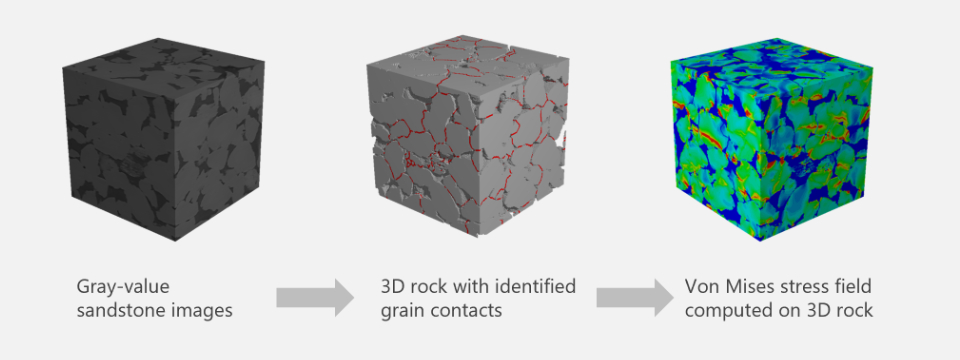Speaker: Dr. Christian Hinz, Head of Oil & Gas Business / Math2Market GmbH
Geomechanics and Seismics in Digital Rocks
Abstract
Introduction
The digital rock physics (DRP) technology carries numerous advantages to obtain mechanical rock properties: repeated usage of the exact same samples due to the non-destructive nature of the digital approach, automated optimal workflows, reduced time to results, scalability via cloud computing during peak demand, and reduced operating costs.
However, computational methods tend to overestimate the stiffness compared to experimental results. One major reason for such behavior lies in the trade-off between field of view and image scan resolution. In the resulting segmentation of digital rocks, grain-to-grain contacts are not resolved. The goal of this study is to correct the results of stiffness computations based on experimental results.
Methodology
In this study, we analyze micro-CT scans of conventional sandstones. We apply AI methods, including Random Forest and deep learning, to segment the 3D rock images into the pore space and mineral phases. Furthermore, we use a deep learning algorithm based on a UNET architecture to identify grain contacts. We introduce a definition of contact strength as a calibration method to predict elastic properties in 3D rock models. For effective stiffness computations, we solve sets of linear elasticity equations that include the elastic equilibrium equation and Hooke’s law, using periodic or symmetric boundary conditions. We apply an FFT-based solver to simulate the mechanical properties, formulating the problem either based on stress or strain. Subsequently, constitutive equations are used to convert the computed effective stiffness into seismic properties, such as primary and secondary wave velocities, and acoustic impedance.
Results and Conclusions
We present the applicability of the DRP concept for the simulation of elastic properties in 3D rock models. With the introduction of grain-to-grain contact strengths, the computed rock bulk moduli are in line with experimental studies. Based on the suggested DRP workflow, we discuss potential use cases, such as a link to reservoir monitoring at CO2 injection sites via quantitative seismic interpretation (QSI) and pore-scale two-phase flow simulations. We can thus recommend the implementation of DRP-based property predictions for geomechanics and seismics in general.

